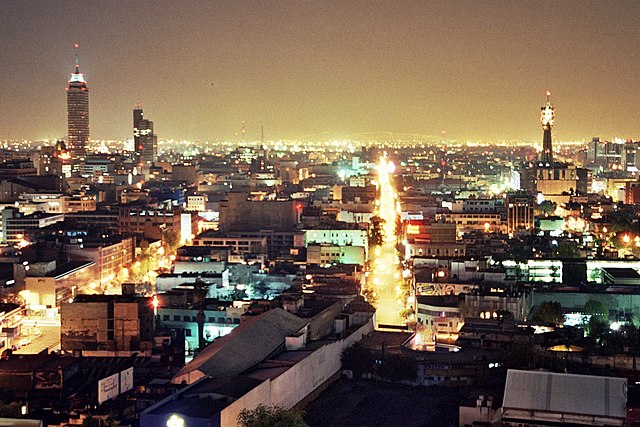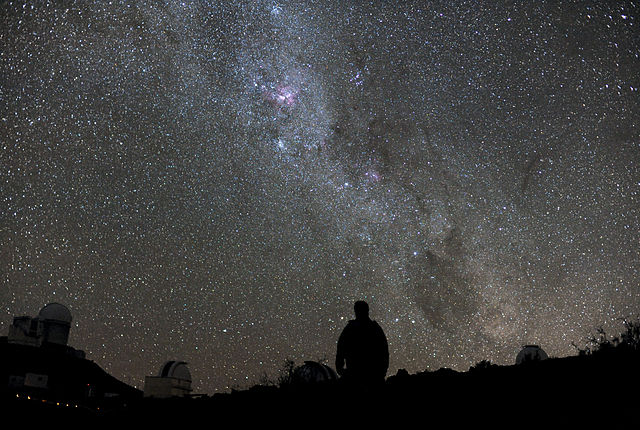Skyglow is the diffuse luminance of the night sky, apart from discrete light sources such as the Moon and visible individual stars. It is a commonly noticed aspect of light pollution. While usually referring to luminance arising from artificial lighting, skyglow may also involve any scattered light seen at night, including natural ones like starlight, zodiacal light, and airglow.
Mexico City at night, showing skyglow
In this 10-second exposure, facing south toward Sagittarius, three forms of light pollution are present: skyglow, glare, and light trespass.
In remote areas on moonless nights clouds appear dark against the sky. In or near developed areas skyglow is strongly enhanced by clouds.
Skyglow is mostly unpolarized, and its addition to moonlight results in a decreased polarization signal. Humans cannot perceive this pattern, but some arthropods can.
The night sky is the nighttime appearance of celestial objects like stars, planets, and the Moon, which are visible in a clear sky between sunset and sunrise, when the Sun is below the horizon.
Stars in the night sky
The Milky Way is brighter in the Southern Hemisphere than in the North. (Photo taken at La Silla Observatory)
Paranal Observatory nights. The concept of noctcaelador tackles the aesthetic perception of the night sky.
The Milky Way contains billions of stars, arranged in two strikingly different structures: halo and disc.








